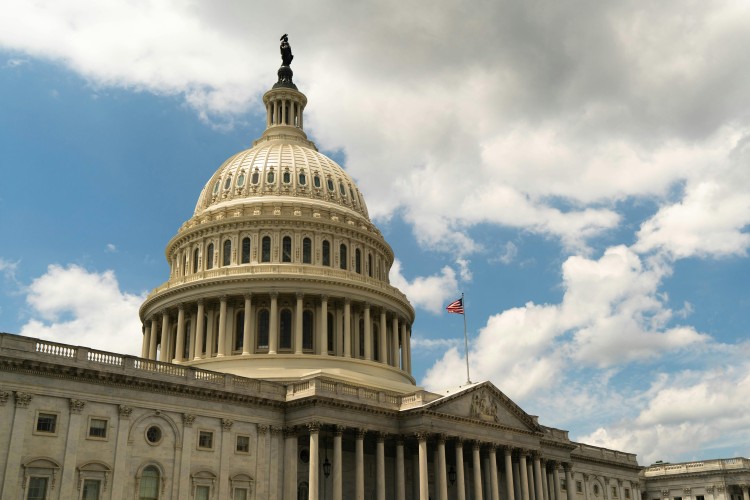What’s Next? The Federal Landscape and Beyond: 7 Emerging and Persistent Trends Impacting Youth Across the Country

What’s Next? The Federal Landscape and Beyond: 7 Emerging and Persistent Trends Impacting Youth Across the Country
In September 2016, 54 youth service organizations from 24 states took the time to collaboratively identify current environmental trends, implications for youth and providers, and practical actions we can take in response to - or better yet in anticipation of - these trends. As a part of this discussion, we invited a few guests with expertise in some of the recurring trend areas to share with us their “deep dive” knowledge. These included a federal landscape briefing, exploring the intersection of juvenile justice and homelessness, trends in research, key youth employment trends, trends related to USICH outcomes areas, and creating a new narrative to frame human services in our current environment. Following these brief presentations, we identified those trends that supersede individual communities or issues and were impacting the field as a whole, the implications of those trends, and finally, where we as a national organization can best use our resources to strengthen outcomes for youth within our current realities. MANY distilled these conversations down to seven overarching trends:
1. Advocacy Pressure Points
Given the change in administration there are a lot of unknowns, including the new administration’s priorities and how discretionary funding will be impacted. Additionally, in a climate of increasingly divided political discourse/action there is rising concern around how youth and youth programming will be impacted
2. Behavioral Health – Youth Are Falling Through The Cracks
Drugs, particularly those with stronger side effects (i.e. Heroin, Meth, Spice, K2 ) continue to be difficult for providers and communities to keep up with and respond to. Providers are seeing increasingly complex behaviorial health needs along with increased intensity of needs for special populations. These needs are exacerbated by fewer resources to draw on from Mental Health and/or Child Welfare systems. We heard multiple reports of young adults with emerging psychosis unable to qualify for adult Mental Health intervention. In some states, youth as young as the age of 12 were being denied the protection they need from neglect due to state budget cuts. This is coupled with youth who have greater needs being required to jump through more and more hoops to access services and often falling through the cracks until another crisis occurs.
3. Racial Tension
This is the first time we are seeing this trend area articulated in this way and it is probably one of the trends that received the most attention during our discussion. Providers noted increased attention to policing and race as well as the disruption racial tensions are causing in communities. The sharpening of race relations and dialogue as well as the disproportional racial disparities (including incarceration of juvenile/minors) are trends that are growing in many communities. There are even growing tensions on the organizational level that include a racial disconnect between clients and staff, particularly in those programs where staff are not representative of the populations they serve.
4. Affordable Housing
Low vacancy of safe, affordable housing continues to be a struggle. Combined with low wages, this trend is having significant impacts on communities and service providers. The experiences of young adults are further exacerbated by a lack of credit history, the criminalization of homelessness, limited access to qualified co-signors, and often, transportation/location issues that require youth to choose between existing support systems and the location of available housing. There seems to be a growing interest (amongst the provider community) in identifying innovative alternatives such as host homes, alternative living arrangements, tiny homes, etc. Additionally, as a country, we are just beginning to figure out what a (developmentally tailored) coordinated approach to ending youth homelessness looks like.
5. Decreased Financial Viability for Youth
Youth and young adult unemployment is more than double the national rate. There is a clear need to rethink how to connect these youth to the economy. This continues to be one of the top challenges that providers are attempting to address in local communities. Transportation, child care, housing, and navigation support are all barriers that have been, and continue to be, major challenges to employment. Beyond employment, the issue of livable wages were cited as a growing challenge across communities.
6. Collaboration
Yeah, we’ve all heard it – collaboration, collaboration, collaboration. The movement towards deep collaboration is increasing and the impact on local community organizations is significant. There is a difference between organizations being largely focused on their outcomes and collaborating to achieve those as needed versus a deep collaboration that integrates outreach, assessment, service provision, data collection and iterating together to improve outcomes community-wide. This type of collaboration is increasingly required to achieve the outcomes we want to achieve. It is a heavy lift, has significant impact on services and funding, requires working through intersectionality, and can impact the stability of organizations in some cases. P.S. Trust and buy-in are concepts that should not be overlooked.
7. Funding
Taking a collective impact approach is encouraging organizations and communities to use data to inform service decisions and funding decisions in real time – allowing these communities to iterate more often and more quickly. It’s a constant ballet that is also impacted by a funder’s ability to be nimble and support innovation as it is emerging. Also, the change in administration brings with it uncertainty about federal and state funding and organizations are preparing for those changes and anticipating what this means for the momentum that has been built in multiple issue areas.
Your Thoughts
Which of these resonate with your experiences locally or regionally? Which of these are most critical to address first or could have the most catalytic effect? Are there other trends that made your Top 7 list but we didn’t hit? Stay tuned for the full report where we talk about the implication of these trends. I often say that providers are experiencing and responding to changes in our environment before funders, legislators, or researchers are even able to put a label on it. Providers typically spend less time labeling these trends and more time digging into understanding them and trolling through their resource rolodex to figure out how to strengthen outcomes for youth while facing these new realities. In fact, by the time labels come around providers are often in the process of refining their responses versus developing them. At MANY, we seek to build the resiliency of providers and thus their ability to strengthen outcomes for youth in real-time. We do this by engaging with the field to identify, innovate, evaluate, and educate.


